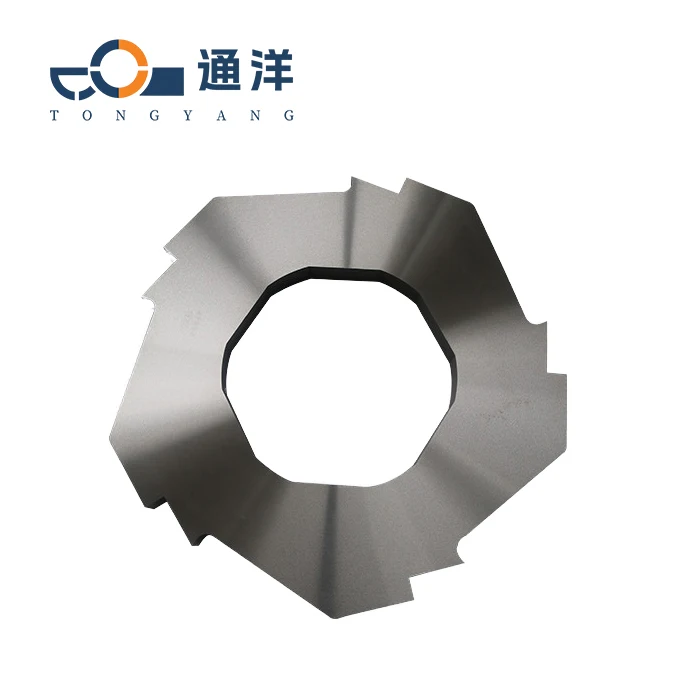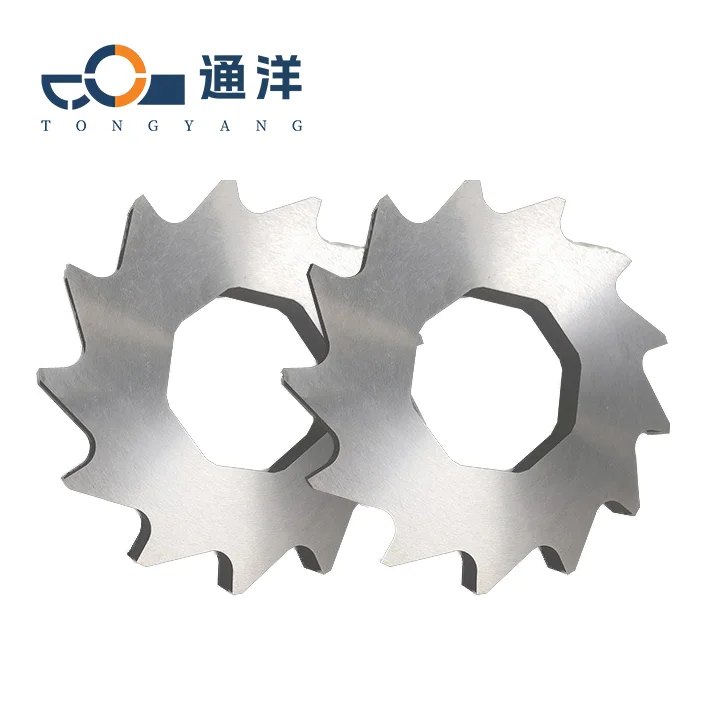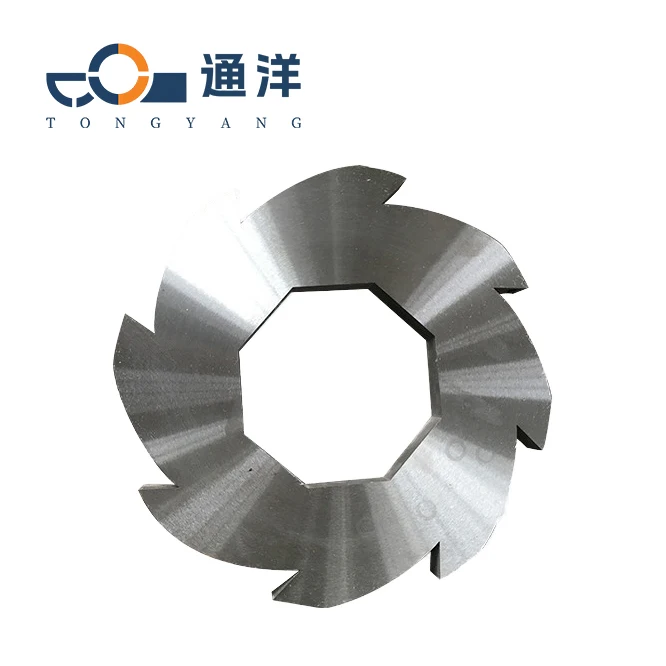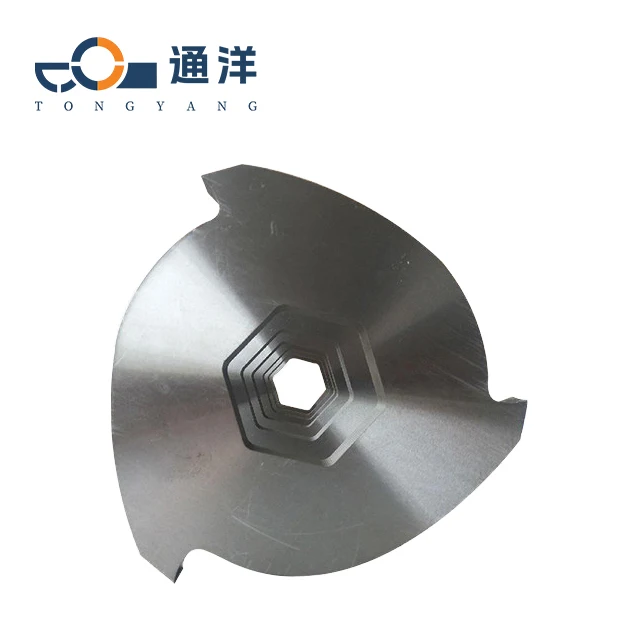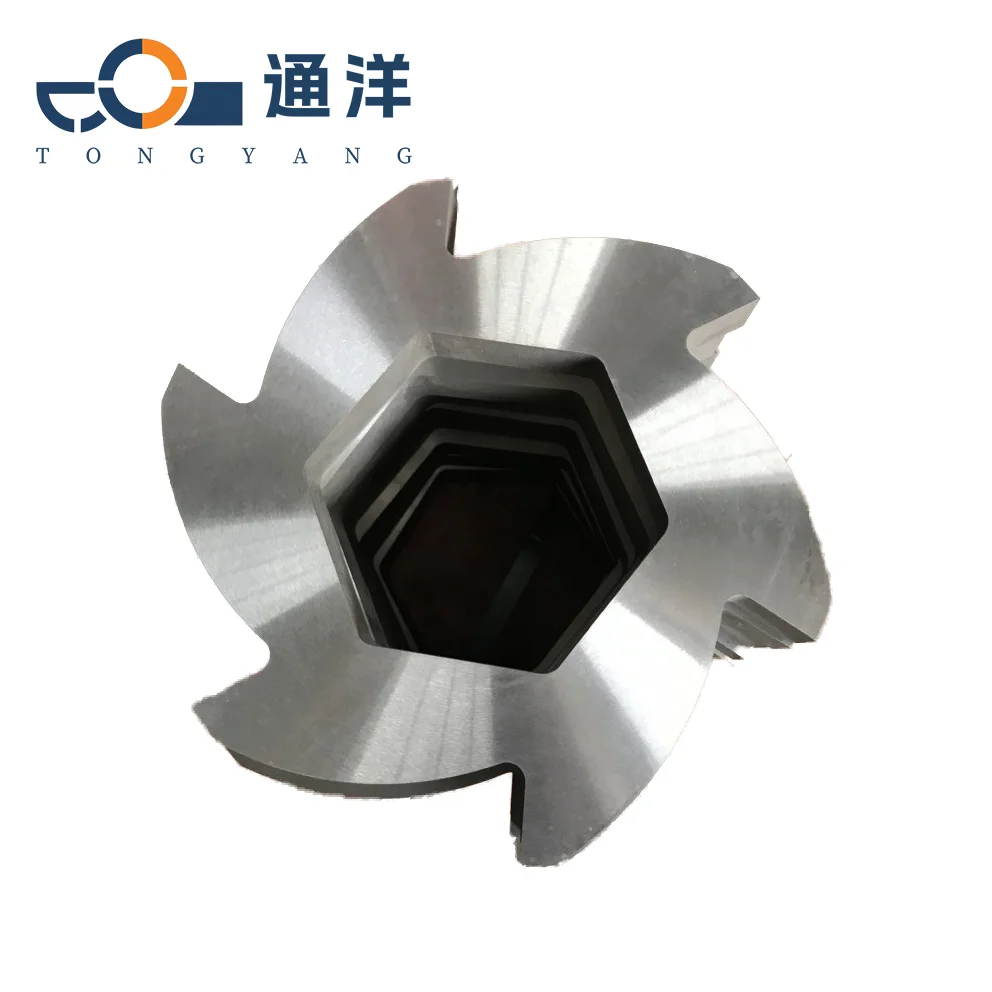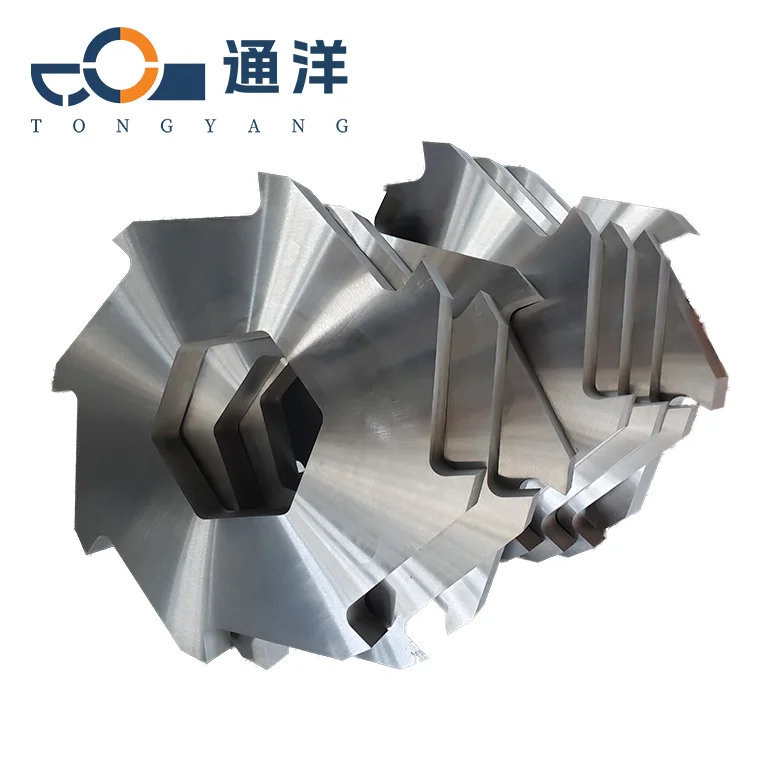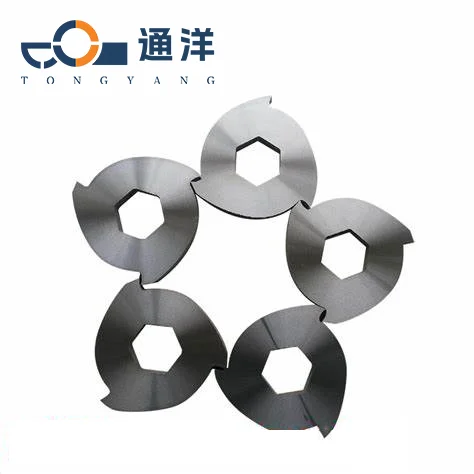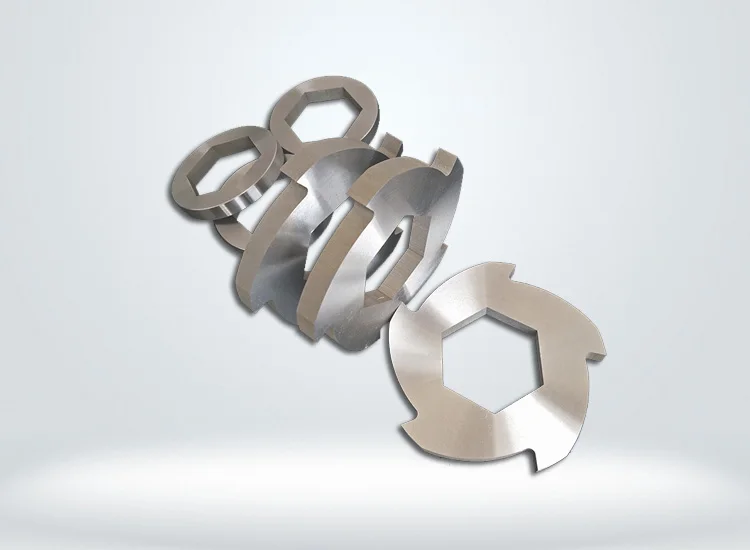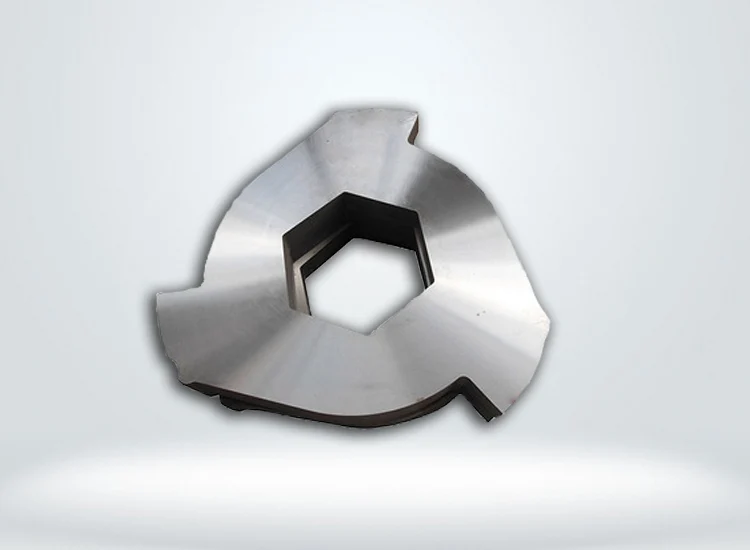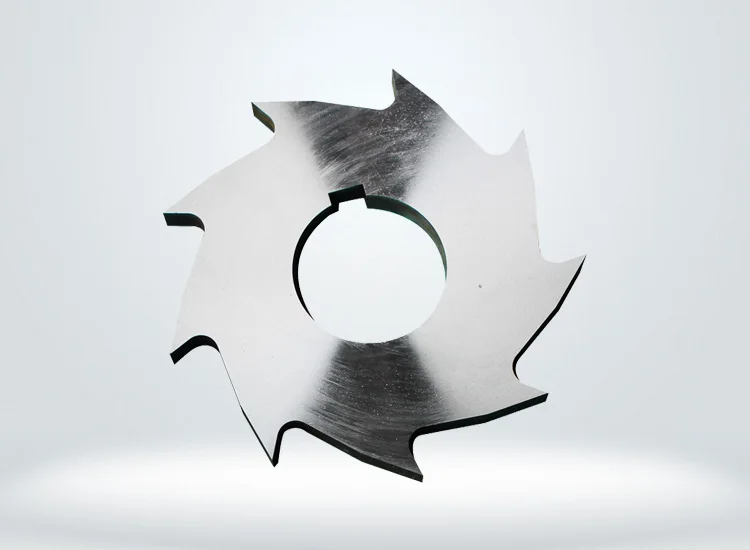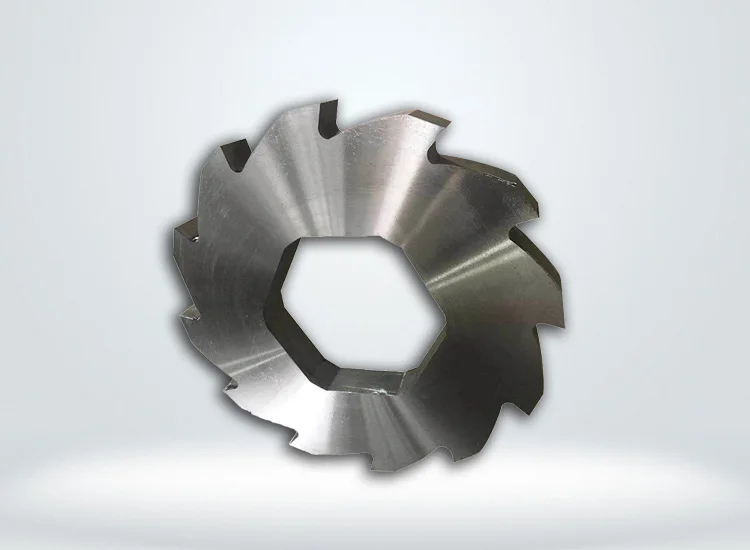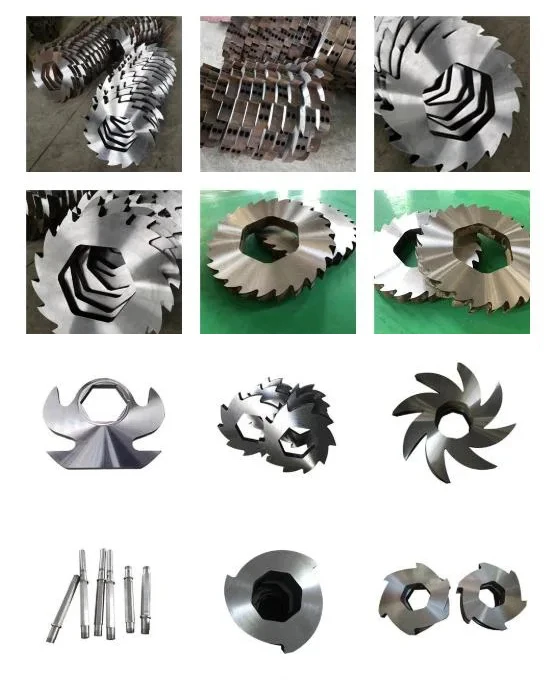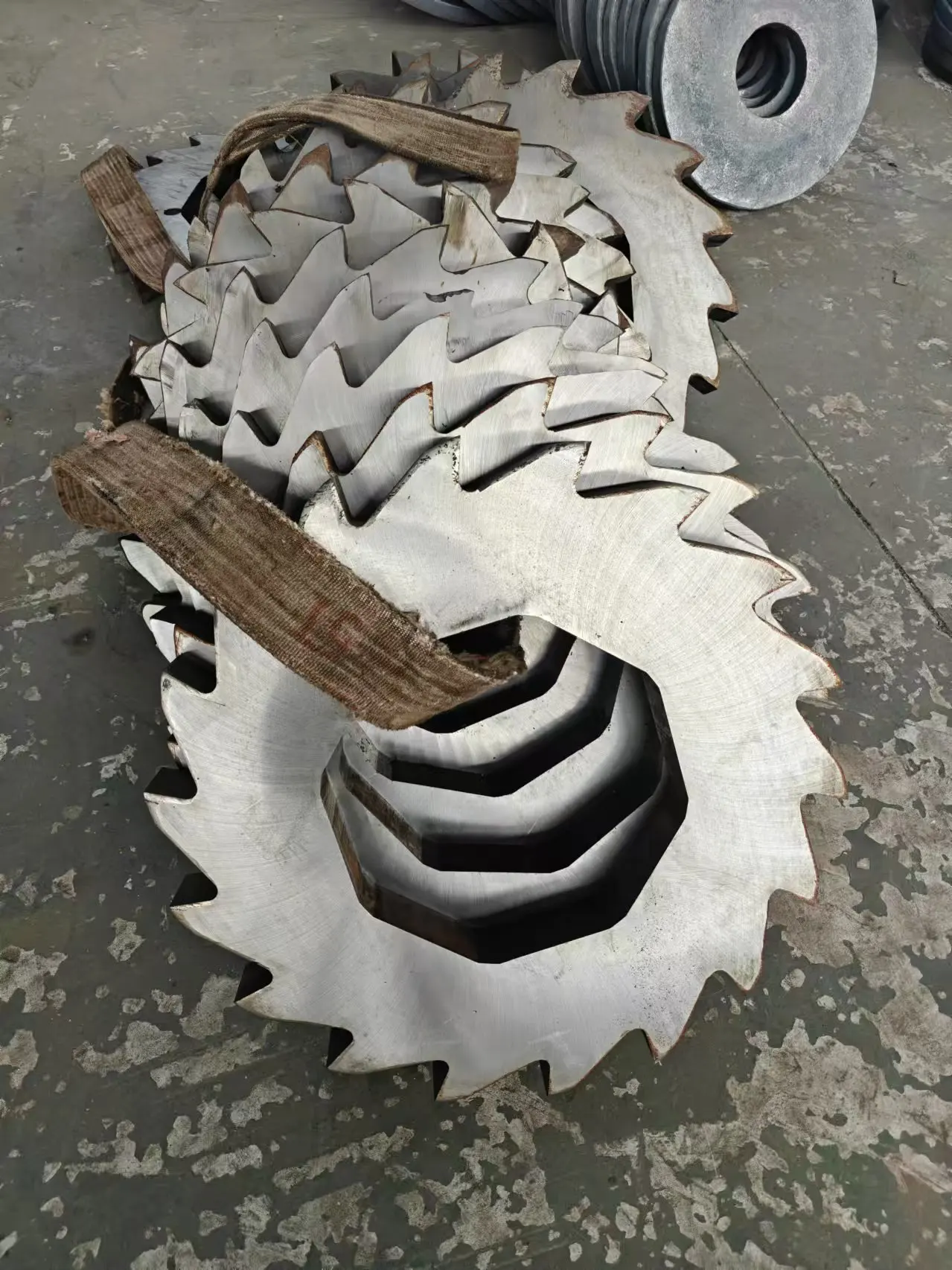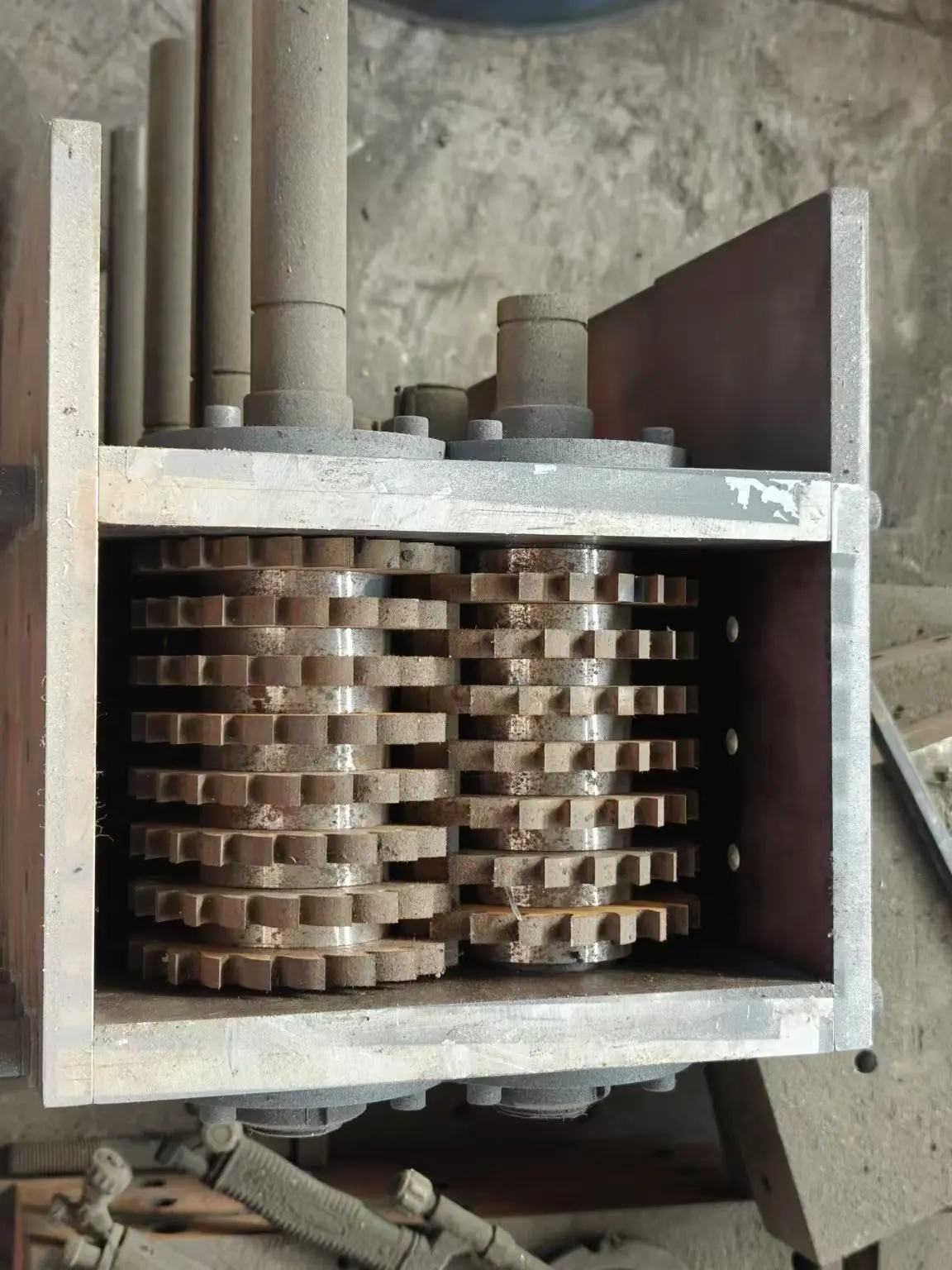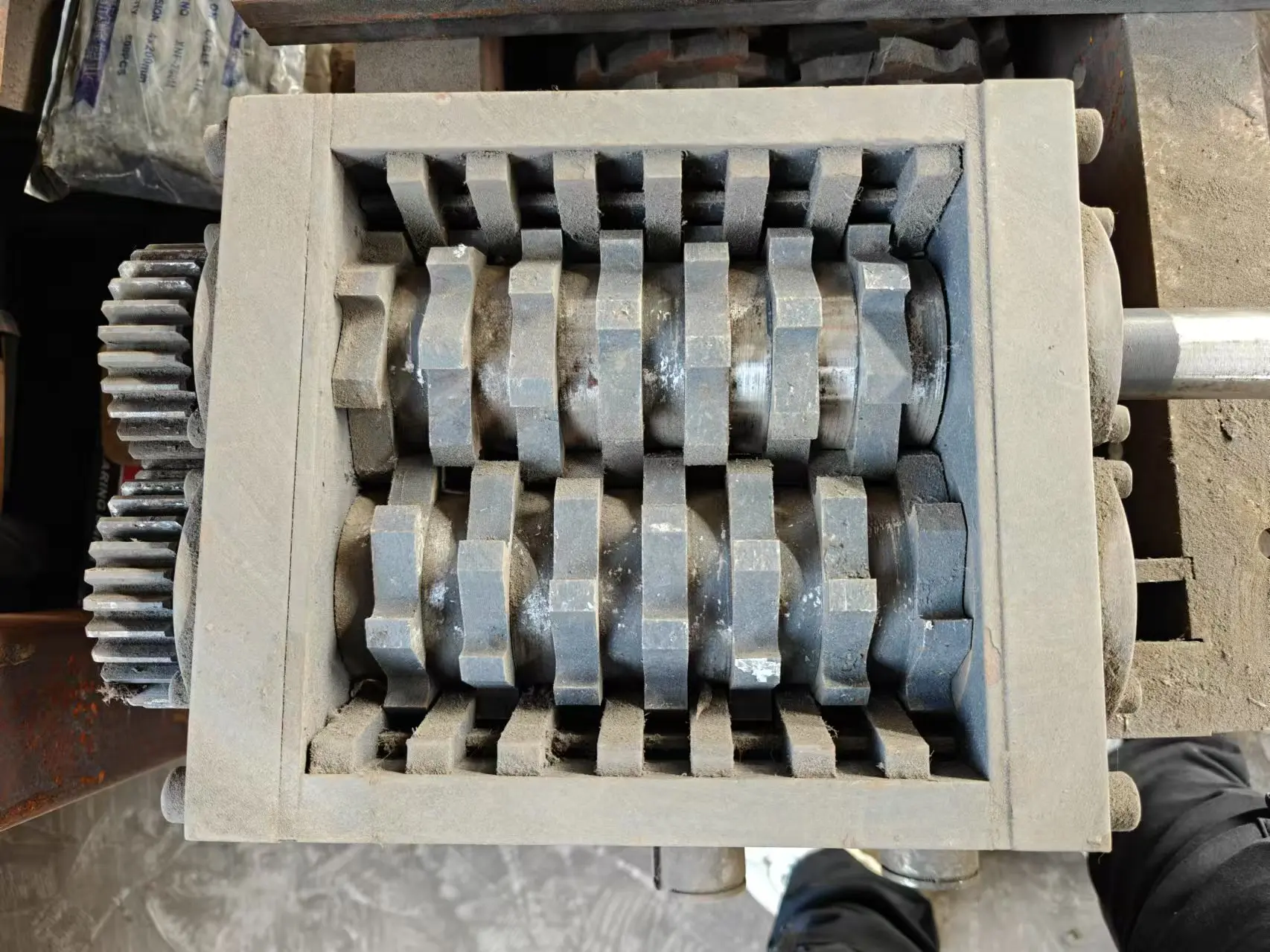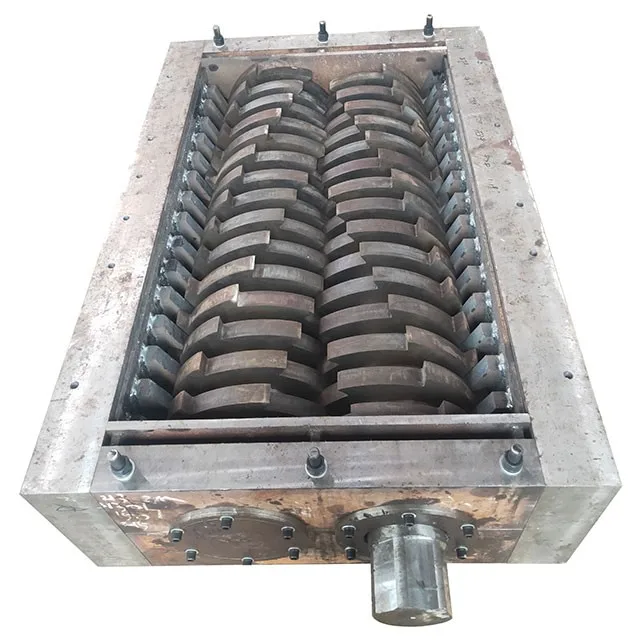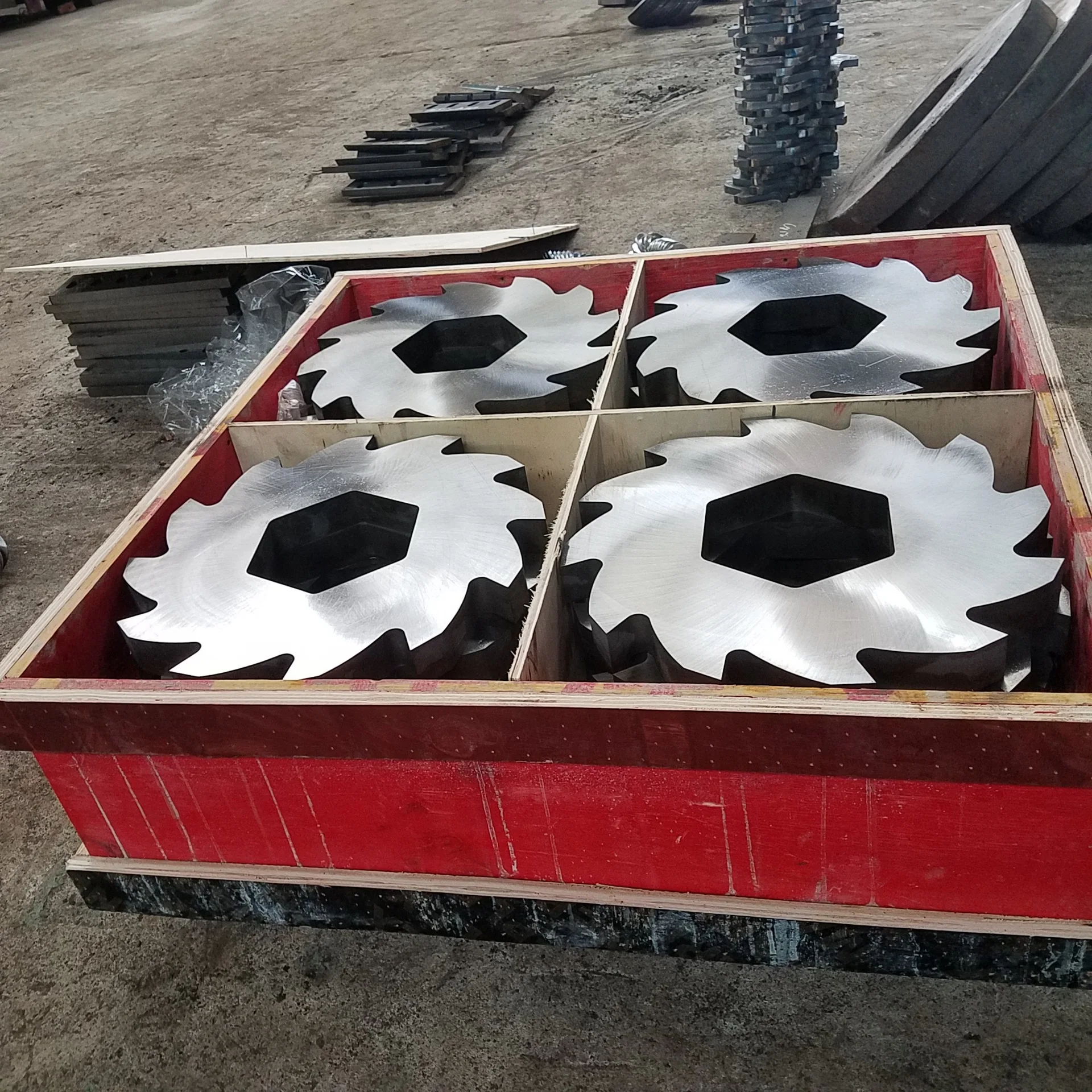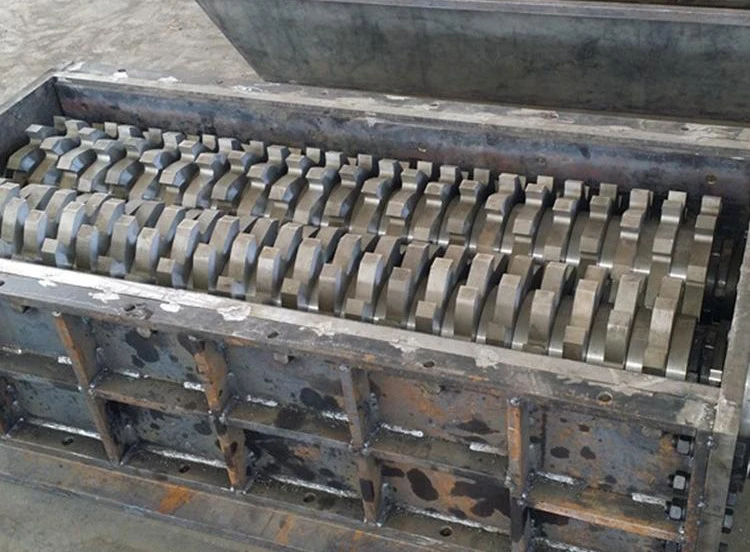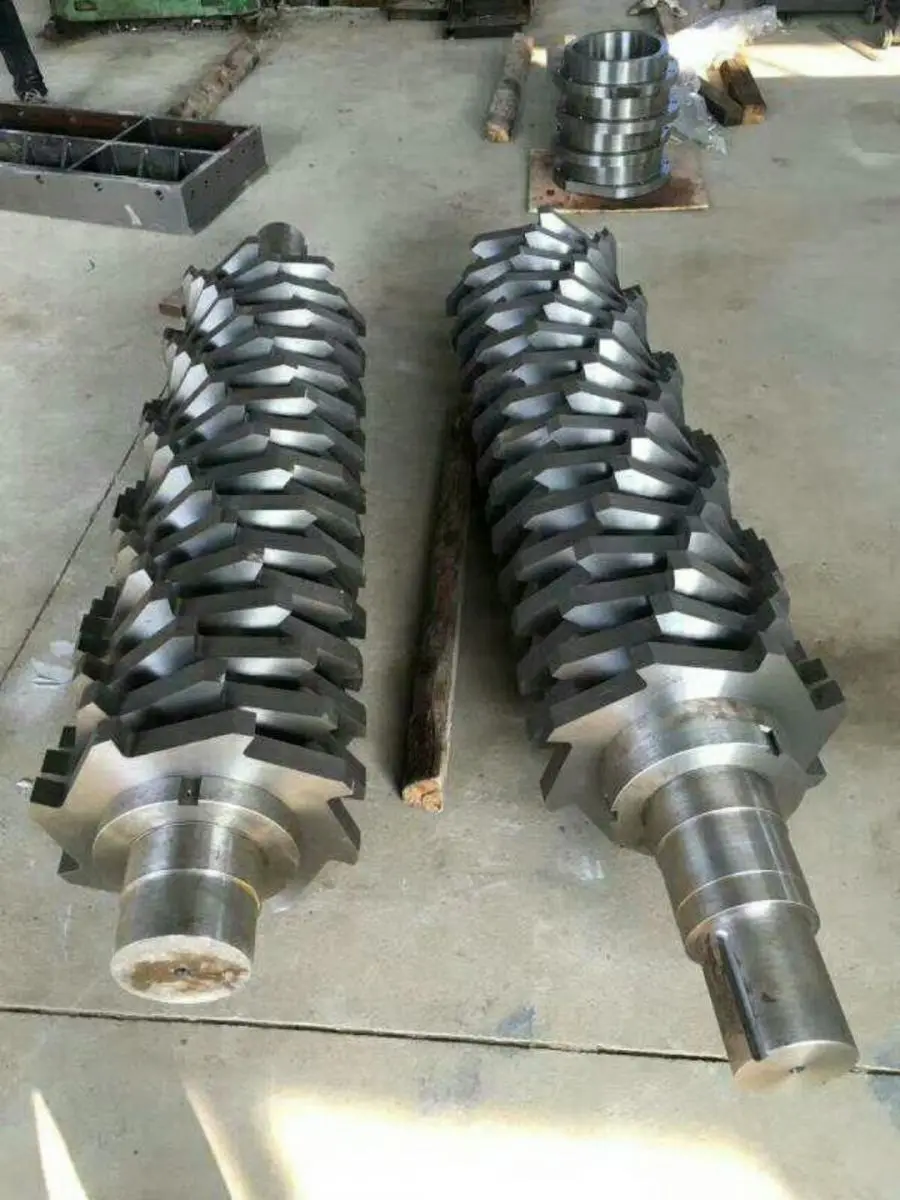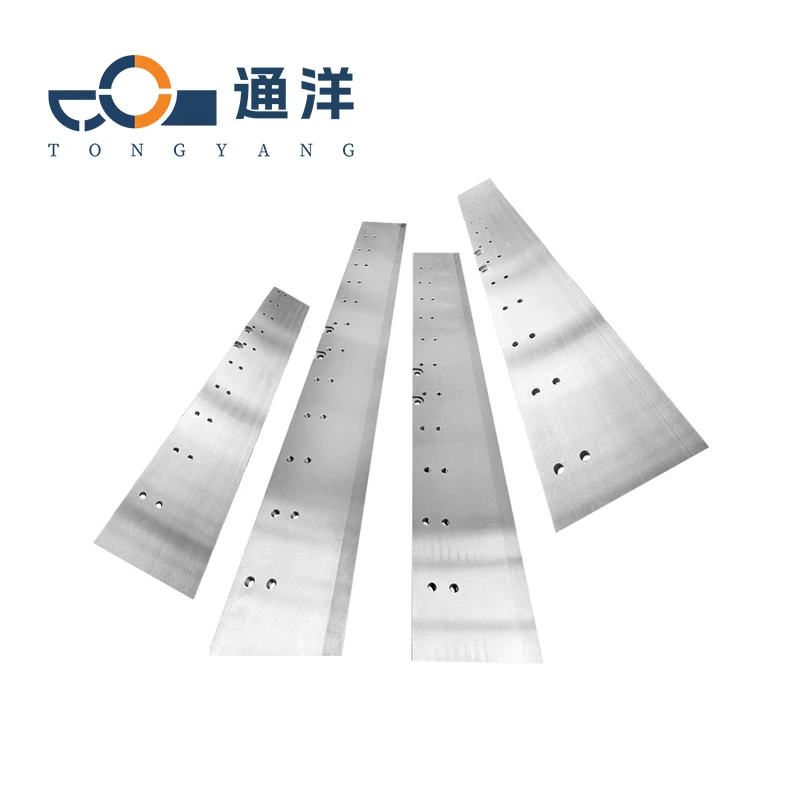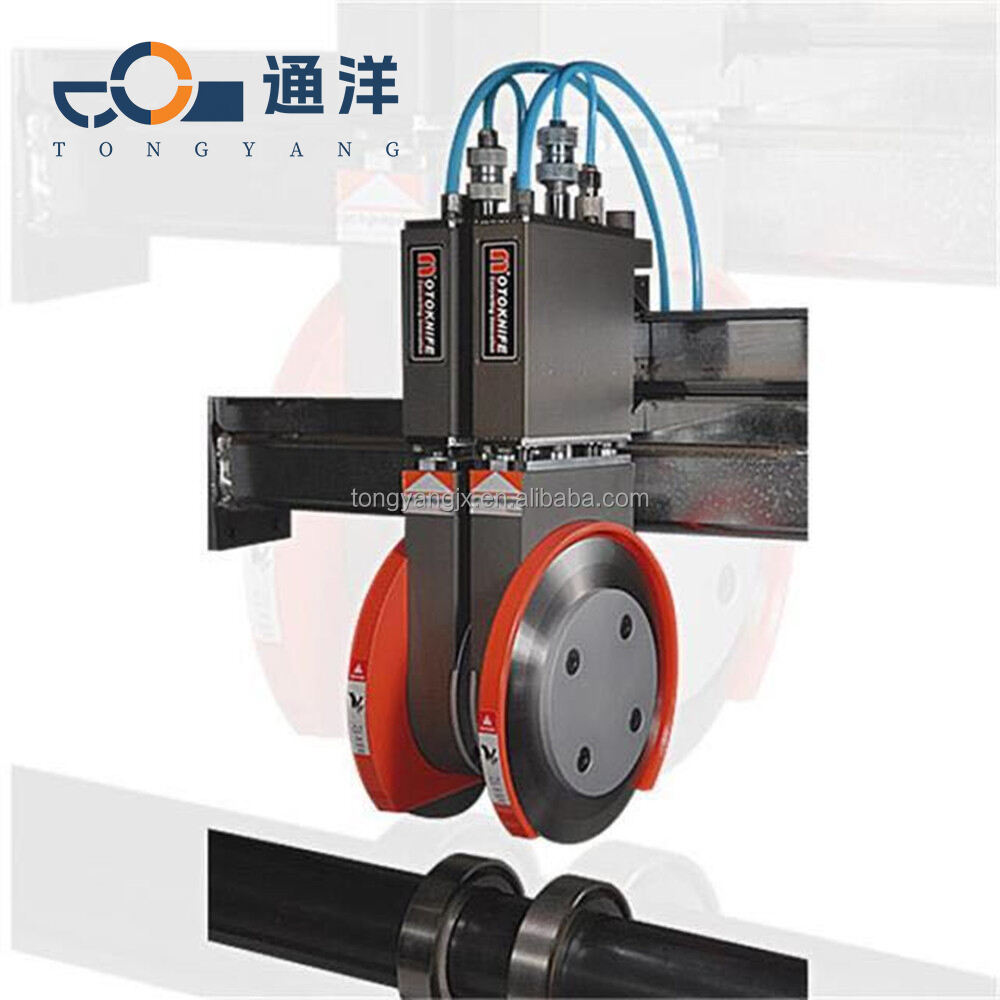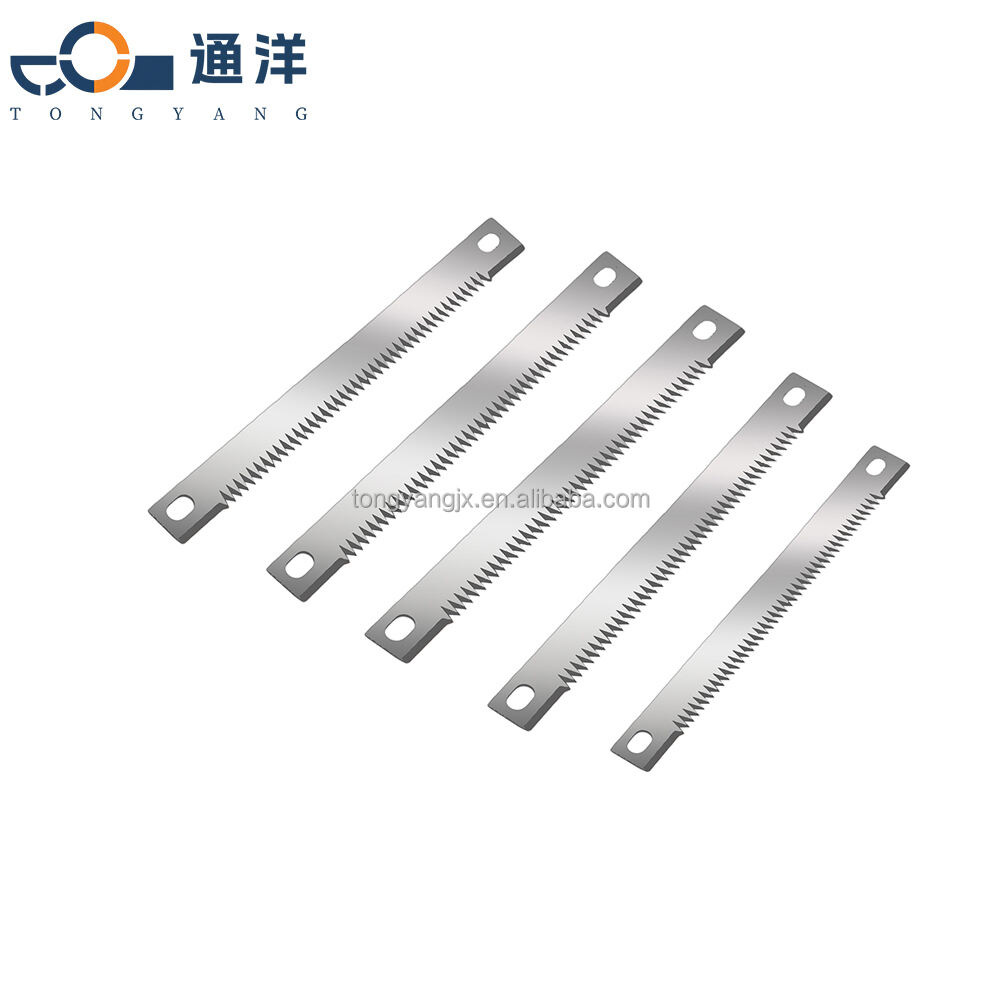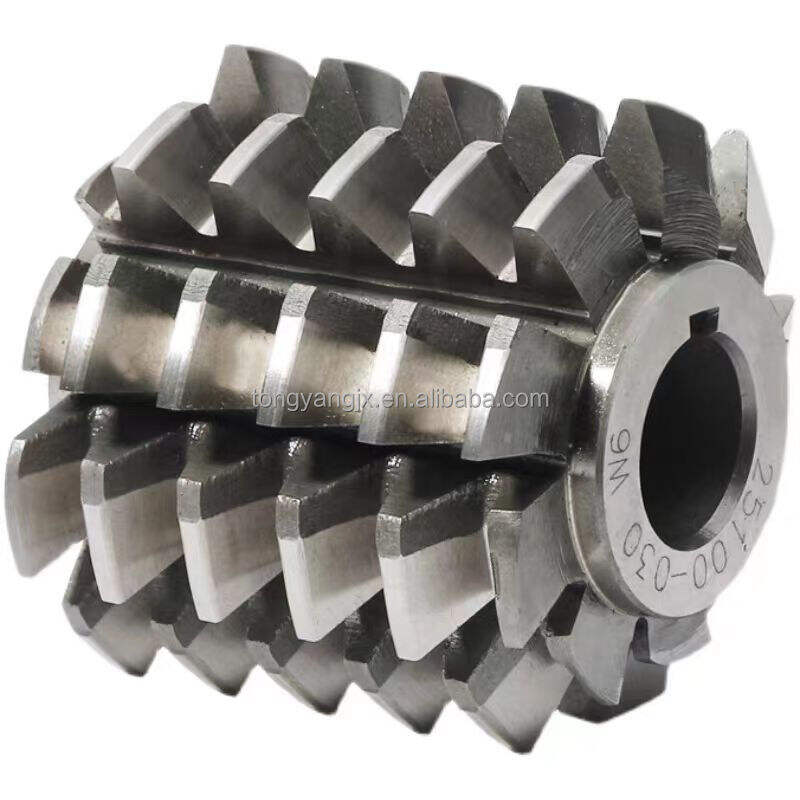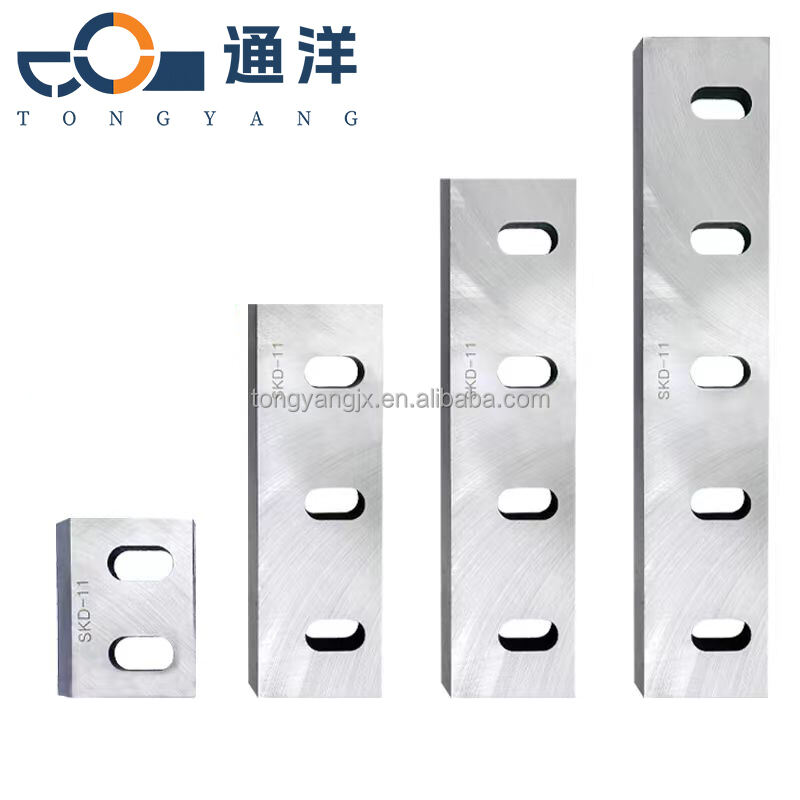Blades of the dual-shaft shredder
- Overview
- Related Products
products Description

| Place of Origin | Aanhuie, Manshan |
| Condition | New |
| Material | 9crsi, d2, h13 and etc |
| Application | shredding and crushing |
| Hardness | 55-63hrc |
| Packing | wooden case |
| Size | customized |
| Brand | TY |
| Warranty | 1 Year |
The design of the number of teeth, tooth shape, thickness and size of
the blade of the dual-shaft shredder is the core factor to achieve the
1.Shredding particle size of different materials
Number of teeth and tooth spacing:With a large number of teeth and a small distance between
teeth: The cutting points of the blades are dense, which is suitable for fine shredding (such as plastic
fragments and metal shavings). The finished product has a uniform and fine particle size (usually ≤ 50mm).
With a small number of teeth and a large distance between teeth: The blades form a
larger biting space, which is suitable for coarse shredding (such as large pieces of wood and tires). The
particle size of the finished product is relatively large (it can reach 100 - 300mm).
2.The Function of the Blade Thickness
Thick blades (≥20mm):Thick blades (≥20mm): They have high strength and strong impact resistance.
They are suitable for shredding hard materials (such as metals and glass), reducing the risk of deformation
or breakage.
Thin blades (≤15mm):The blade edge is sharp, with low cutting resistance. It is suitable for soft
materials(such as paper and cloth), which can improve the shredding efficiency.
Design logic: Match the thickness with the hardness of the material to balance wear resistance and
energy consumption.
3.The Influence of Blade Dimensions (Diameter/Width)
Large-sized blades: Increase the cutting area, and are suitable for handling large-volume materials
(such as used furniture and automobile casings), thus increasing the single processing capacity.
Small-sized blades: They can achieve higher rotational speeds and are suitable for scenarios that
require fine crushing or rapid cycling (such as electronic waste recycling).
Matching shaft spacing: The staggered design of the two-shaft blades (usually, the shaft spacing is
1.2 - 1.5 times the blade diameter) determines the volume of the shredding chamber and the material
passing rate.
4.Optimization of Tooth Shape and Surface Treatment
Sawtooth-shaped/Wolf tooth-shaped teeth: Enhance the material grasping ability and are
suitable for fibrous materials (such as rubber and plastics).
Smooth cutting edges: Reduce material entanglement and are suitable for sticky materials
(such as food waste).
Surface quenching/coating: Improve the hardness (HRC 55-62) and extend the wear-resistant
service life (especially for hard materials).
5.Examples of Application Scenarios
| Material Type | Blade parameters (example) | Finished product particle size |
| Waste metal barrels | 4 teeth, with a thickness of 30mm and a diameter of 400mm | 100-150mm |
| Plastic turnover box | 8 teeth, with a thickness of 15mm and a diameter of 300mm | 30-50mm |
| Municipal solid waste | 12 teeth, with a thickness of 20mm, and serrated shape. | 20-30mm |
Effect Eisplay


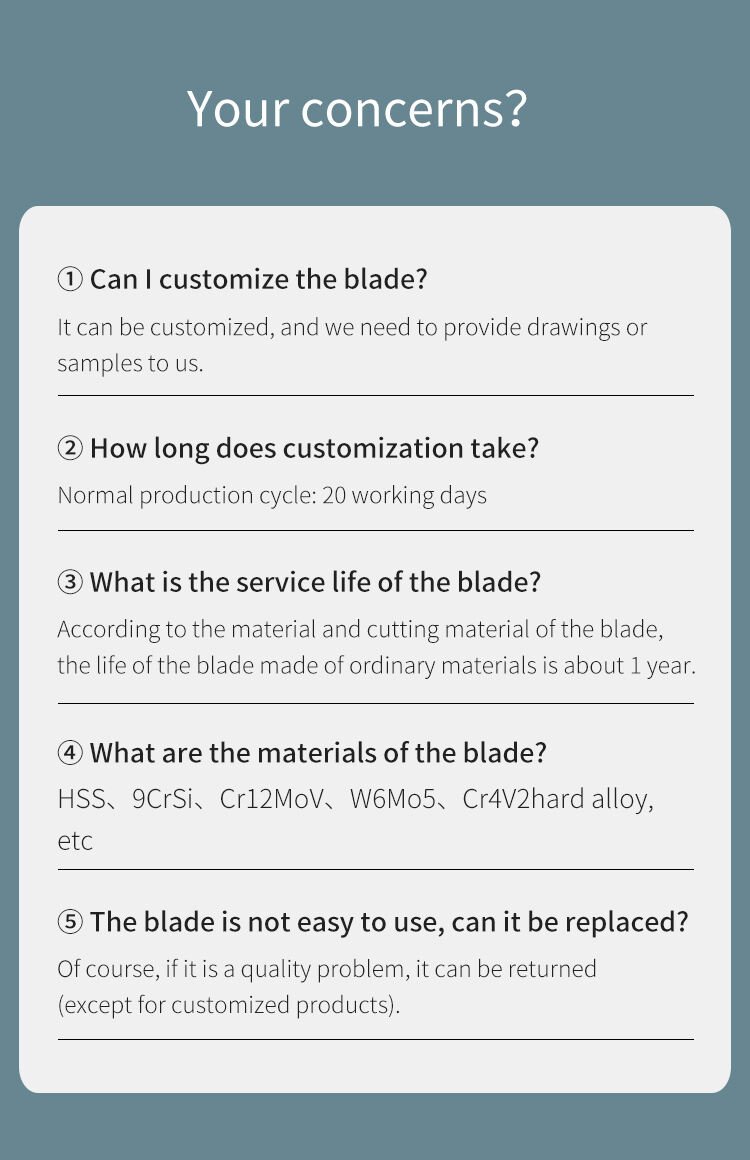

 EN
EN
 AR
AR
 HR
HR
 CS
CS
 DA
DA
 NL
NL
 FI
FI
 FR
FR
 DE
DE
 EL
EL
 IT
IT
 JA
JA
 KO
KO
 NO
NO
 PL
PL
 PT
PT
 RO
RO
 RU
RU
 ES
ES
 SV
SV
 IW
IW
 ID
ID
 LV
LV
 LT
LT
 SR
SR
 SK
SK
 SL
SL
 UK
UK
 SQ
SQ
 ET
ET
 HU
HU
 TH
TH
 TR
TR
 FA
FA
 AF
AF
 MK
MK
 KA
KA
 UR
UR
 BN
BN

